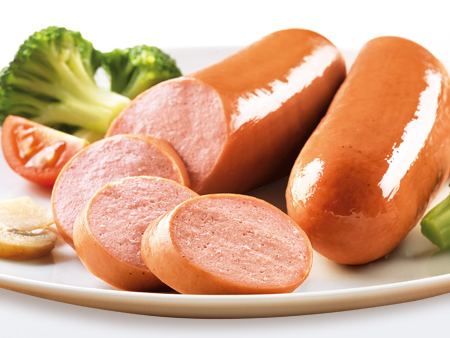Similar Bockwurst, Bratwurst, Beef, Pork, Liverwurst | ||
Smith s garlic knackwurst
Knackwurst ( [ˈknakˌvʊʁst]) (in North America spelled knockwurst ( listen )) refers to a sausage type of northern German origin from the mid-16th century. The manifold available varieties depend on the geographical region of their production.
Contents
- Smith s garlic knackwurst
- Knockwurst in the US
- Knackwurst in Germany
- Etymology and pronunciation
- References
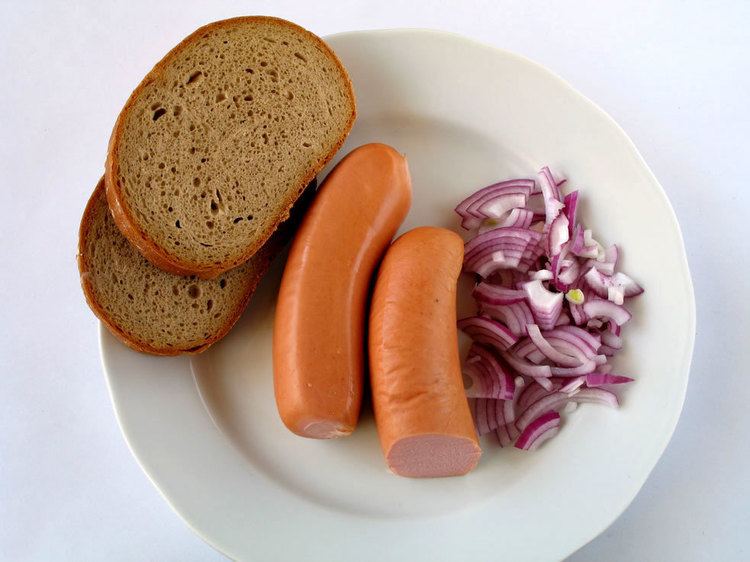
Knockwurst in the US
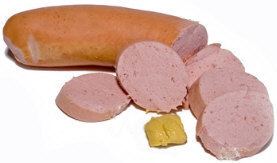
In North America, a knockwurst refers to a short, plump sausage originating from northern Germany. It contains ground veal, ground pork, and fresh garlic stuffed into hog casings.
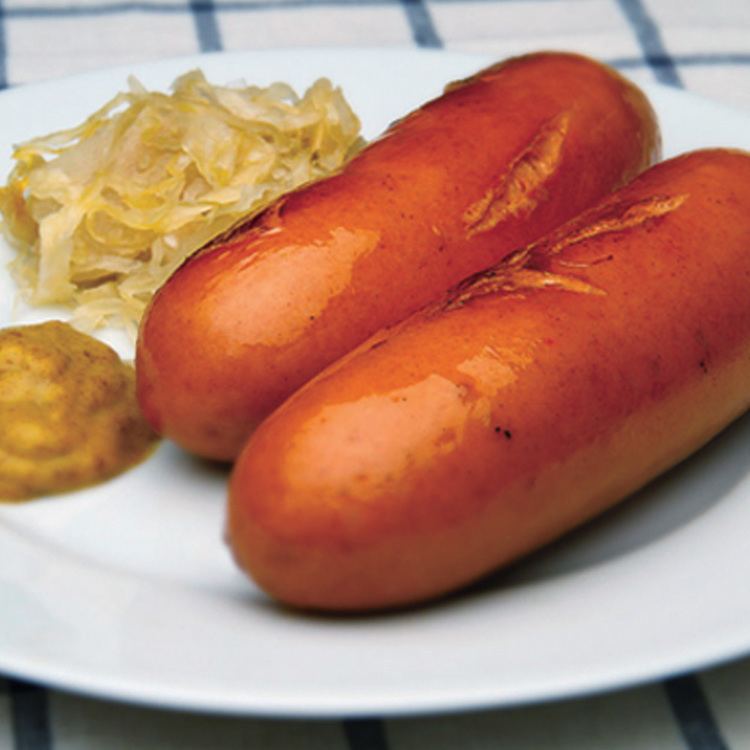
As part of the production process, the sausages are aged for two to five days, then smoked over oak wood. Knockwurst is often prepared highly seasoned.
Knockwurst is sometimes cut in half lengthwise before serving, for example, when served on a sailor sandwich.
Knackwurst in Germany
Numerous varieties of knackwurst exist in Germany; all differ from Austrian knackwurst.
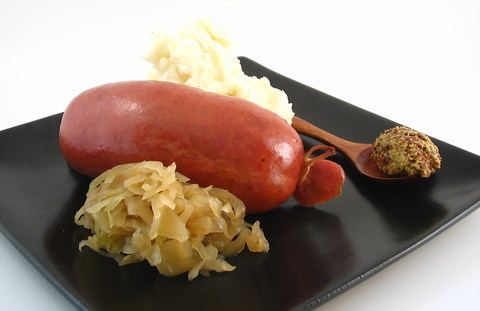
As a specialty in Hamburg, brewed Knackwurst served with mustard and half a slice of unroasted toast bread is a popular snack for lunch. It is also sold at the Hamburger Dom, the largest Volksfest in northern Germany, under various names like Domknacker, Hamburger Knacker, or Hafenlümmel (literally: harbour tyke).
Etymology and pronunciation
The German noun Knackwurst—which, in English, is sometimes corrupted as knockwurst—comes from the German verb knacken ( listen ) ("to crack") or the adjective knackig ( listen ) ("crisp"). This refers to the swelling of the sausage during the process of cooking, so that the skin becomes pressurized and balloon-like, and tends to "pop," often exploding the juices, when bitten into (authentic example: listen ). The term ″Knackwurst″ came up in Germany the middle of the 16th century. In Germany, all different kinds of Knackwürste are abbreviated Knacker ( listen ).
